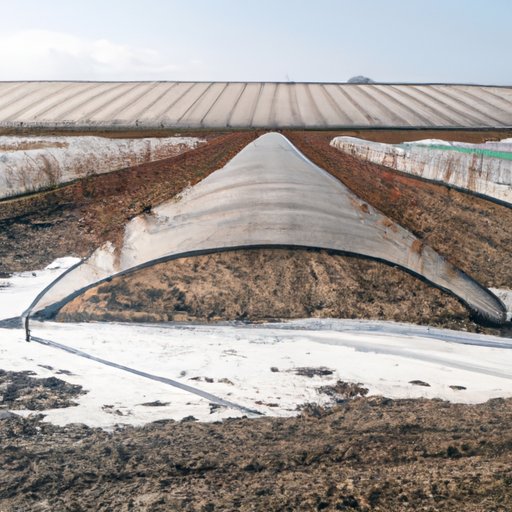
I. Introduction
Frost can be a gardening nightmare, damaging or even killing plants. It can be particularly devastating for gardeners who have invested time, effort, and money in growing their plants. Luckily, there are several methods for protecting plants from frost. The purpose of this article is to provide readers with a guide to preventing frost damage. This article will cover the use of covers, appropriate watering, the use of mulch, row covers, creating a mini greenhouse, and choosing plants that are more tolerant of the cold.
II. Covering the Plants
Covering plants is a simple and effective way to protect them from frost. Covering plants protects the leaves, stems, and flowers from low temperatures. Choosing the right cover is important. It’s vital to select materials that are breathable yet durable. Covers should be secured to ensure that they do not slip off the plants. Burlap and blankets are ideal for covering plants. Frost cloth is also a good option because it is lightweight, resistant to tears, and can be used multiple times without losing its effectiveness.
III. Watering Before a Freeze
Watering plants before a freeze is another effective way to prevent frost damage. Water helps heat up the soil and the plant’s roots. This provides the plant with a source of heat during the colder temperatures, allowing the plant to retain its heat for a longer period of time. However, it’s important to start watering the plants well in advance of the freeze. This lets the water penetrate deeply into the soil where it can help the plant the most. The best time to water is in the afternoon before the evening of the freeze. Water right at the base of the plant, taking care to avoid the foliage so as not to encourage fungal growth.
IV. Mulching
Mulching is another option for protecting plants from frost damage. A thick layer of mulch acts as an insulator, helping to keep the soil and the plants’ roots warm. Mulch should be applied in the fall, before the first freeze. Organic mulch materials like leaves, straw, or wood chips can be used. Look for mulching materials that can break down and fertilize the soil over time. When applying mulch, it’s important to use a deep layer, around 2-3 inches.
V. Using Row Covers
Row covers are an excellent way to protect plants from frost. Row covers are often made from lightweight, breathable material like spunbond polypropylene. This material allows sunlight, air, and moisture to reach plants while also protecting them from frost. Row covers should be placed on the plants before the first frost and removed when temperatures rise above frost levels. Secure the covers using stakes or wire hoops, making sure they do not damage the plants during windy weather. Doing so helps the plants to withstand cold and wind damage.
VI. Creating a Greenhouse Environment
Creating a mini greenhouse is feasible and can be accomplished on a budget. This prevents plants from being exposed to harsh frost and cold winds. A Cold Frame or Cloches is an excellent way to provide protection to plants and are relatively easy to make and use. Cold frames can be constructed of wood and have hinged lids that open for air circulation. Cloches are small individual covers that surround a single plant. Arced PVC pipes covered with clear plastic make great Cloches. Choose materials carefully to ensure they are durable while also working for the required purpose.
VII. Choosing Cold-Hardy Plants
One way to reduce the risk of damage from frost is to select plants that are resistant to the cold. This can mean selecting plant species that are native to colder climates, as they will be more tolerant of cold weather. Some examples of cold-hardy plants include landscape evergreens such as junipers, yews, hollies, and boxwoods. Ornamental grasses like feather reed grass, miscanthus, and blue oat grass are also great options. When selecting cold-hardy plants, it’s important to consider your local hardiness zone.
VIII. Conclusion
Protecting plants from frost damage requires a bit of foresight and effort, but it is possible. Creating a plan to protect plants from frost will ensure that your plants will grow and yield as expected. Use the tips we have discussed: covering plants, watering ahead of a freeze, mulching, using row covers, creating a greenhouse environment or cloches, and choosing cold-hardy plants. Remember that prevention is easier and cheaper than replacement. Keep these tips in mind to successfully protect your plants from frost and encourage a healthy growing season.





